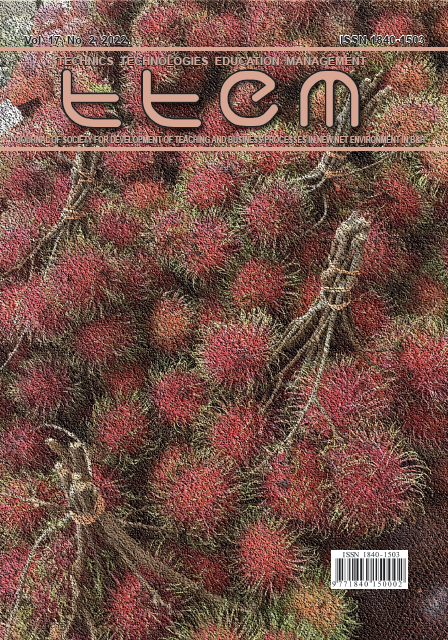Comparison of Ottoman Era Skopje Bazaar with Similar Bazaars

Ammar Ibrahimgil
Faculty of Architecture, Gazi University, Ankara, Turkiye
Abstract
_________________________
The formation of the typical Turkish bazaar in cities is directly related to the understanding of “fu- tuwwa” and the tradition of “akhism”. As a com- mon-public education organization that trained well- behaved professionals with high moral values, the Akhi organization shaped the bazaars that formed the center of the social life of the Ottoman city. These cities, which were built according to an understanding that protects unity and integrity while glorifying individuality, are under threat today for different reasons. The aim of this study is to compar- atively analyze the social and architectural changes that have taken place over time in the bazaars, which were built in recent history and have a rich cultural diversity even within themselves. For this purpose, based on the Skopje Bazaar, the bazaars of Istanbul, Bursa, Tokat, Korçe (Görice), Novi Pazar, Sarajevo, Monastir and Thessaloniki were analyzed.
Key Words: Medival Ottoman bazaar, urban heritage, akhism
References
_________________________
- Aktsaoglou, I. J. (1991). Salonika In The Late Ottoman Era, Boğaziçi Üniversitesi Sos. Bil. Enst., İstanbul.
- Aksulu, I., and Kuntay, O. (2013). Kimlikli Kent To- kat, Hazar Yayın, Ankara.
- Ankay, Ö. E. (2015). Üsküp kent Merknin Tarihsel Doku Değişimi ve Üsküp 2014 Projesi, Yıldız Teknik Üni. Fen Bil. Enst., İstanbul.
- Arsovski, T. (1970). Stara Skopska Çarşija. Minister- stvo za Kultura, Skopje
- Aruçi, M. (2008). “Sancak”, İslâm Ansik., 36, TDV, İstanbul, pp. 99-102
- Aydin, C. (1989). “Ali Kuşçu”, ” İslâm Ansik., Vol.6, TDV, İstanbul, pp. 408-410.
- Ocak, A. Y. (1996). “Fütüvvet” İslâm Ansik., Vol.6, TDV, İstanbul, pp. 261-263.
- Ayvazoğlu, B. (1999). “Osmanlı Estetik Dünyasına Bir Bakış”, G. Eren (Ed.), Osmanlı Ansik., Vol.1, Yeni Türkiye Yayınları, Ankara, pp.17-28.
- Ayverdi, E. H. (1981), Avrupa’da Osmanlı Mimari Eserleri, Vol.3, İstanbul Fetih Cemiyeti, İstanbul.
- 1Ayverdi, E. H. (1985), “Misilsiz Çarşıya Mersiye”, Makaleler, İstanbul Fetih Cemiyeti, İstanbul, pp. 217-222.
- Barkan, Ö. L. (1942). “Kolonizatör Türk Dervişleri ve Zaviyeler”, Vakıflar Dergisi, Vol.2, pp. 279-304.
- Bejtić, A. (1952). “Monuments of Ottoman Archi- tecture in Bosnia and Hercegovina (Spomenici Osmanlijske arhitekture u Bosni i Hercegovini)”, Prilozi za orijentalnu filologiju i istoriju jugoslov- enskih naroda pod Turskom vladavinom, Vol.3-4 No. 55, pp.229-297.
- Cerasi, M. M. (1999). Osmanlı Kenti, YKY, İstanbul.
- Cezar, M. (1985). Tipik Yapılarıyla Osmanlı Şehirciliğinde Çarşı ve Klasik Dönem İmar Sistemi. MEB, İstanbul.
- Çayirli, N. (2000). Manastır’ın 2 Numaralı Şer’iye Sicili. Ege Üni. Sos. Bil. Enst., İzmir.
- Delibaşi, M. (1987). “Selânik ve Yanya’da Osmanlı Egemenliği’nin Kurulması”, Belleten, Vol. 89, pp. 51-62.
- Eyice, S. (1992). “Büyük Çarşı”, İslâm Ansik.. Vol.5, TDV, İstanbul, pp. 509-519
- ICOMOS (2017), “Guidance on post trauma re- covery and reconstruction for world heritage cul- tural properties”, available at: http://openarchive. icomos.org/1763/19/ICOMOS%20Guidance%20 on %20Post%20Trauma%20Recovery%20.pdf (ac- cessed 10 December 2022).
- İbrahimgil, A. (2018). “Makedonya Üsküpün Tarihi Kent Dokusunun İncelenmesi ve Koruma Önerisi”, Unpublished PhD Thesis, Gazi Üni Fen Bil. Enst. Ankara.
- İbrahimgil, M. Z. (1999). “Manastır’- da Eğitim Yapıları Atatürk’ün Okuduğu Askeri İdadi”. Atatürk ve Manastır Sempozyumu Bildirileri. Gazi Üniver- sitesi, Ankara, pp.109-123.
- İnalcik, H. (1997). “İstanbul›un İncisi: Bedesten” M. Özel (Ed.), İktisat ve Din, İz Yayıncılık, İstanbul, pp.119-136.
- İnbaşi, M. (1995). Osmanlı İdaresinde Üsküb Kazâsı (1455-1569). Atatürk Üni. Sos. Bil. Enst., Erzurum.
- Keil, M. (2009). “Selânik”, İslâm Ansik., Vol.36, TDV, İstanbul, pp. 352-354
- Kreševljaković, H. (1953). “Stari bosanski gra- dovi”, Naše starine, Vol.1, pp. 7-45.
- Kudumovic, L. (2021), “Bascarsija (Bashcarshiya), Sarajevo’s historic core: evaluating the qualities of its open spaces”, Archnet-IJAR, Vol. 15 No. 3, pp. 524-538. Available at: https://doi.org/10.1108/ ARCH-08-2020-0170 (accessed 10 December 2022)
- Mujezinovic, M. (1985). Islamska Epigrafija u Bos- ni i Hercegovini. Sarajevo Publishing, Sarajevo.
- Ocak, A. Y. (1996). “Fütüvvet” İslâm Ansik., Vol.6, TDV, İstanbul, pp. 261-263.
- Patieridis, G. (2009). “Engravings showing Thes- saloniki from the 15th to the 19th century, from the collections of Giorgos Patieridis and Kostas Stama- tis”. D. Kalamarias (Ed.) Mouseio Fotografias Christos Kalemkeris, Thessaloniki.
- Premoviç, A. D. (2014). Islamski Spomenici Novog Pazara. Muzej Ras Novi Pazar, Novi Sad.
- Prifti, K. (2003). “Manastır”, İslâm Ansik.. Vol.27, TDV, İstanbul, pp. 562-563
- Sambanopoulou, L. (2008). “Thessaloniki in The Ottoman Period (15th-18th C.)”, E. Brouskari (Ed.), Ottoman Architecture in Greece, Hellenic Ministry of Culture, Athens
- Sari, M. Ü. (1996). “Manastır Vilayeti’nin İdari ve Sosyal Yapısı (1873-1912)”, Unpublished PhD Thesis, 19 Mayıs Üni. Sos. Bil. Enst., Samsun.
- Sönmez, Ç. B. (1993). “Kapalıçarşı’nın Fonksiyo- nel Değişimi”, Unpublished PhD Thesis, İstanbul Üni. Sos. Bil. Enst., İstanbul.
- Sulo, G., Shota, G. and Dervishi, S. (2014). “A Comparative Study of Ottoman Inns in Albania during the XVII Century”. Proceedings of the 2nd ICAUD International Conf. in Architecture and Urban Design. Epoka University, Tirana, pp. 141-153. Available at: http://dspace.epoka.edu.al/ handle/1/983 (accessed 10 December 2022)
- Stefanovska, J. and Kozelj, J. (2012). “Urban planning and transitional development issues: The case of Skopje, Macedonia”. Urbani izziv, Vol. 23, pp. 91-103. DOI: 10.5379/urbani-izziv- en-2012-23-01-002
- Stilinovic, M., Cattor, B. And Meulder, B. D. (2013). “Mapping The Realms of The Soldiers – Cartogra- phies of Military Landscape in Skopje And Bitola”. 9th CTV. Memoria, Roma, pp. 919-927.
- Şabanoviç, H. (1959). Bosanski Paşaluk. Sarajevo: Naučno Društvo Na Bosne i Hercegovine.
- Traskosopolou, K. (2008). “Thess’- aloniki in Otto- man Period (19th-20th c.)”, Ottoman Architecture in Greece; E. Brouskari (Ed.), Hellenic Ministry of Culture, Athens.
Corresponding Author
Ammar Ibrahimgil,
Faculty of Architecture,
Gazi University,
Ankara,
Turkiye,
E-mail: ibrahimgil.ammar@gmail.com
